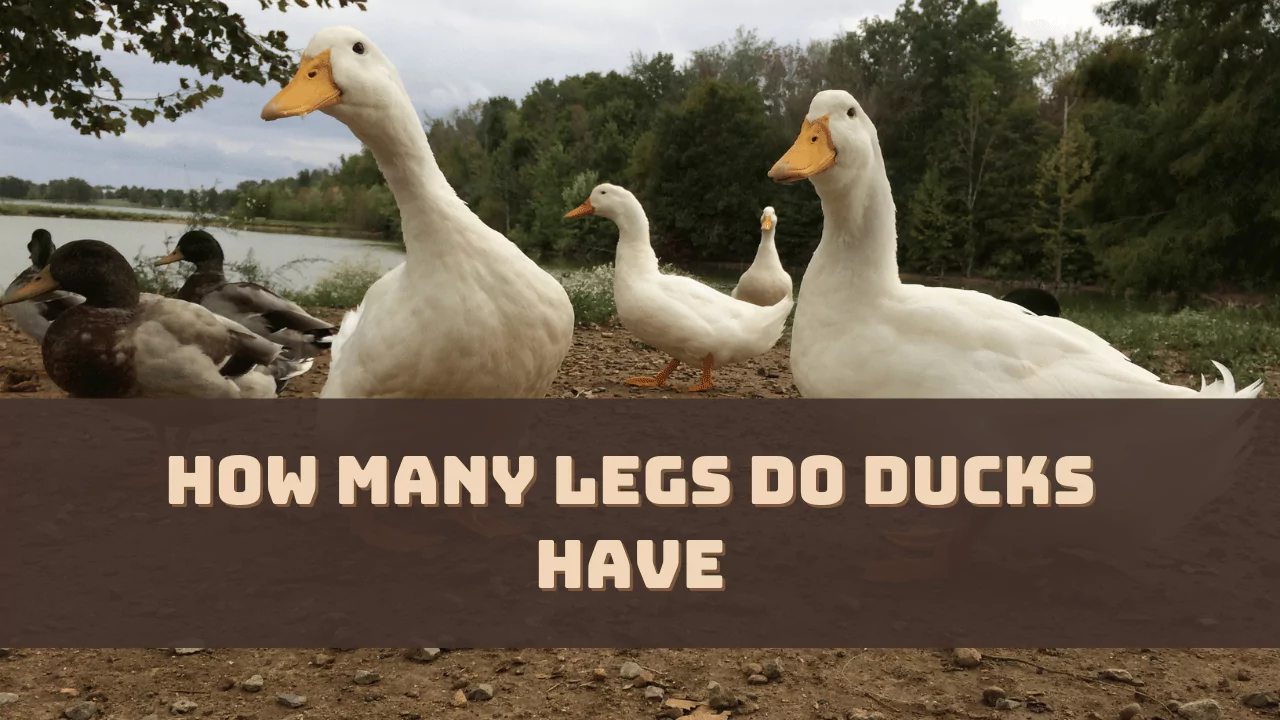Ducks have two legs. They are commonly sighted in ponds, lakes or rivers but the distinct feature of the legs is these are webbed. Ducks use their legs to find food, navigate through water, groom themselves, and regulate body temperature.
So, let’s get to understand the anatomy of duck legs and how they are adapted for swimming.
Skeletal Structure of Duck’s Leg
Ducks are lightweight and are designed for flight. Their bones are hollow, yet they have a strong skeletal structure which helps them to maintain their strength. They have a keeled breastbone called the sternum, which acts as an anchor for their flight muscles. The wings are attached to the sternum which helps in propelling while they are in water or air. They have two legs – left and right and the bones included are the femur, tibiotarsus, tarsometatarsus, and phalanges. They use this to walk on land and swim in water. The duck’s legs help in paddling and steering. The propulsion in water is provided through their webbed feet.
How Do Ducks Use Their Two Legs?
Depending on whether they are on land or water, ducks use their legs.
Land
On land, the two legs are used for walking, running, standing, jumping and other locomotive purposes. The legs give them better balance and stability on land and they have a wide stance with their feet positioned outside their body’s central line.
Water
In water, the ducks use their legs for paddling and propelling through the streams. The feet help to push against the water and due to the wide surface of the webbed legs, they can efficiently move without any hindrance. They use both legs while paddling, unlike other animals which improve their movement in the water and reduce lagging.
Feet Adaptations in Ducks
Ducks have webbing between their four toes which makes them adapted for swimming. It helps him to paddle and propel through the water and they can speed up to 6 miles per hour. It also helps them to find food or escape predators to increase resistance or to move against the water currents. The ducks spread their feet wide apart when they want to move forward through the water, and then they pull their feet. The web closes while they are moving forward to reduce the dragging issue. With the help of this webbed leg, they can also make turns and maneuver well in water bodies.
To propel better in water, the feet of the ducks are positioned far back of their bodies which is close to the rear. They have scale-like texture on the feet which helps them to grip surfaces and move well. At the hip joint, the legs can rotate and their ankles can flex which is an advantage to move back and forth quickly with every paddle. The metatarsals provide them the power of swimming and they are flat in design.
Ducks have strong leg muscles which allow them to walk on land and swim in water. When walking they have a distinct waddling gait where the feet are spaced widely apart helping them to balance their body when they get into water. They can travel long distances, either by walking or flying as they have stout legs which support their weight and mobility, in any kind of environment.
4 Leg Adaptations that Help Ducks to Swim
Here are the four adaptations of ducks that help them to swim without any struggle.
- Webbed Feet: Ducks have webs between their toes, which help them to swim across the water by paddling and gliding through, effortlessly
- Streamlined Leg: The legs are short and positioned backwards so that they can reduce the dragging effect when in water.
- Muscular Legs: The legs are covered in feathers which makes the limbs powerful, helping them to propel forward and navigate through water effortlessly.
- Bowed Legs: The bowed legs of the duck help in weight distribution and prevent injuries when they walk on different terrains.
Common Leg-Related Issues in Ducks
Ducks face various leg injuries when they go through rough landings, such as sprains, fractures and dislocations, which affect their ability to swim, walk and run. Thus, they need a safe and clean environment along with proper nutrition to prevent leg-related concerns.
Difference Between Male and Female Duck’s Leg Size
When compared, the male ducks have thick and more muscular legs, than females because they have a distinct role to play. Also, males are larger in size and more colorful when compared to female ducks.
During the mating season to overpower the competitors or to defend the territory, the males use their bigger leg size, whereas females have lean legs for egg production and nesting capability.
Can Both Duck’s Feet Help to Regulate Body Temperature?
Yes, the duck’s webbed feet help them to regulate body temperature. When looked closely at the surface of the duck’s feet, many blood vessels flow very close to it, which allows heat exchange with the surroundings. So, if the duck feels too hot more blood starts circulating towards the feet releasing the heat and helping the duck to cool down and when it is cold the blood starts to redirect inward, which conserves the body heat maintaining optimal temperature. They are also seen to tuck one foot into their feathers to prevent excessive heat loss.
Why are the Legs of Ducks Short?
The legs of ducks are short because these are built for swimming and their streamlined design helps them to move through water without creating any dragging issues.
Why are the Ducks’ Legs Bowed?
The skeletal structure of the ducks makes the bowed legs. The bones in the legs are not straight which helps them to distribute the weight of the bird evenly and also absorb the shock of landing.
Why Do the Legs of Ducks Start Peeling?
Ducks often suffer from a condition called Bumblefoot where the legs start to peel. It is a bacterial infection where the feet and legs become inflamed and can only be treated with proper care and antibiotics. If left untreated, this can lead to serious health issues.
What is the Colour of a Ducks Leg?
The duck’s legs are generally orange in color due to the pigment in their food. They mainly consume a diet rich in carotenoids, such as beta carotene, which makes their legs turn orange.
What is Waddling?
Waddling is a distinct term used for ducks and other waterfowls, while they are using their legs. It is a distinct gait characterized by rolling motion from one side to another which helps the ducks to move forward.




